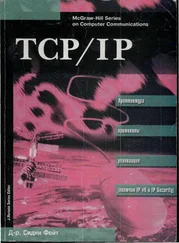An even more unpleasant example is Syria, where the industrialisation of brutality is a third approach to scaling information collection. Malware attacks on dissidents were reported from 2012, and initially used a variety of spear-phishing lures. As the civil war got underway, police who were arresting suspects would threaten female family members with rape on the spot unless the suspect disclosed his passwords for mail and social media. They would then spear-phish all his contacts while he was being taken away in the van to the torture chamber. This victim-based approach to attack scaling resulted in the compromise of many machines not just in Syria but in America and Europe. The campaigns became steadily more sophisticated as the war evolved, with false-flag attacks, yet retained a brutal edge with some tools displaying beheading videos [737].
Thanks to John Scott-Railton and colleagues at Toronto, we have many further documented examples of online surveillance, computer malware and phone exploits being used to target dissidents; many in Middle Eastern and African countries but also in Mexico and indeed in Hungary [1221]. The real issue here is the ecosystem of companies, mostly in the USA, Europe and Israel, that supply hacking tools to unsavoury states. These tools range from phone malware, through mass-surveillance tools you use on your own network against your own dissidents, to tools that enable you to track and eavesdrop on phones overseas by abusing the signaling system [489]. These tools are used by dictators to track and monitor their enemies in the USA and Europe.
NGOs have made attempts to push back on this cyber arms trade. In one case NGOs argued that the Syrian government's ability to purchase mass-surveillance equipment from the German subsidiary of a UK company should be subject to export control, but the UK authorities were unwilling to block it. GCHQ was determined that if there were going to be bulk surveillance devices on President Assad's network, they should be British devices rather than Ukrainian ones. (I describe this in more detail later in section 26.2.8.) So the ethical issues around conventional arms sales persist in the age of cyber; indeed they can be worse because these tools are used against Americans, Brits and others who are sitting at home but who are unlucky enough to be on the contact list of someone an unpleasant government doesn't like. In the old days, selling weapons to a far-off dictator didn't put your own residents in harm's way; but cyber weapons can have global effects.
Having been isolated for years by sanctions, Iran has developed an indigenous cyber capability, drawing on local hacker forums. Like Syria, its main focus is on intelligence operations, particularly against dissident Iranians, both at home and overseas. It has also been the target of US and other attacks of which the best known was Stuxnet, after which it traced the CIA's covert communications network and rounded up a number of agents [578]. It has launched both espionage operations and attacks of its own overseas. An example of the former was its hack of the Diginotar CA in the Netherlands which enabled it to monitor dissidents' Gmail; while its Shamoon malware damaged thousands of PCs at Aramco, Saudi Arabia's national oil company. The history of Iranian cyber capabilities is told by Collin Anderson and Karim Sadjadpour [50]. Most recently, it attacked Israeli water treatment plants in April 2020; Israel responded the following month with an attack on the Iranian port of Bandar Abbas [230].
Finally, it's worth mentioning North Korea. In 2014, after Sony Pictures started working on a comedy about a plot to assassinate the North Korean leader, a hacker group trashed much of Sony's infrastructure, released embarrassing emails that caused its top film executive Amy Pascal to resign, and leaked some unreleased films. This was followed by threats of terrorist attacks on movie theatres if the comedy were put on general release. The company put the film on limited release, but when President Obama criticised them for giving in to North Korean blackmail, they put it on full release instead.
In 2017, North Korea again came to attention after their Wannacry worm infected over 200,000 computers worldwide, encrypting data and demanding a bitcoin ransom – though like NotPetya it didn't have a means of selective decryption, so was really just a destructive worm. It used the NSA EternalBlue vulnerability, like NotPetya, but was stopped when a malware researcher discovered a kill switch. In the meantime it had disrupted production at carmakers Nissan and Renault and at the Taiwanese chip foundry TSMC, and also caused several hospitals in Britain's National Health Service to close their accident and emergency units. In 2018, the US Department of Justice unsealed an indictment of a North Korean government hacker for both incidents, and also for a series of electronic bank robberies, including of $81m from the Bank of Bangladesh [1656]. In 2019, North Korean agents were further blamed, in a leaked United Nations report, for the theft of over $1bn from cryptocurrency exchanges [348].
It's often said that cyber is different, because attribution is hard. As a general proposition this is untrue; anonymity online is much harder than you think. Even smart people make mistakes in operational security that give them away, and threat intelligence companies have compiled a lot of data that enable them to attribute even false-flag operations with reasonable probability in many cases [181]. Yet sometimes it may be true, and people still point to the Climategate affair. Several weeks before the 2009 Copenhagen summit on climate change, someone published over a thousand emails, mostly sent to or from four climate scientists at the University of East Anglia, England. Climate sceptics seized on some of them, which discussed how to best present evidence of global warming, as evidence of a global conspiracy. Official inquiries later established that the emails had been quoted out of context, but the damage had been done. People wonder whether the perpetrator could have been the Russians or the Saudis or even an energy company. However one of the more convincing analyses suggests that it was an internal leak, or even an accident; only one archive file was leaked, and its filename ( FOIA2009.zip) suggests it may have been prepared for a freedom-of-information disclosure in any case. The really interesting thing here may be how the emails were talked up into a conspiracy theory.
Another possible state action was the Equifax hack. The initial story was that on 8th March 2017, Apache warned of a vulnerability in Apache Struts and issued a patch; two days later, a gang started looking for vulnerable systems; on May 13th, they found that Equifax's dispute portal had not been patched, and got in. The later story, in litigation, was that Equifax had used the default username and password ‘admin’ for the portal [354]. Either way, the breach had been preventable; the intruders found a plaintext password file giving access to 51 internal database systems, and spent 76 days helping themselves to the personal information of at least 145.5 million Americans before the intrusion was reported on July 29th and access blocked the following day. Executives sold stock before they notified the public on September 7th; Congress was outraged, and the CEO Rick Smith was fired. So far, so ordinary. But no criminal use has been made of any of the stolen information, which led analysts at the time to suspect that the perpetrator was a nation-state actor seeking personal data on Americans at scale [1446]; in due course, four members of the Chinese military were indicted for it [552].
In any case, the worlds of intelligence and crime have long been entangled, and in the cyber age they seem to be getting more so. We turn to cybercrime next.
Читать дальше











